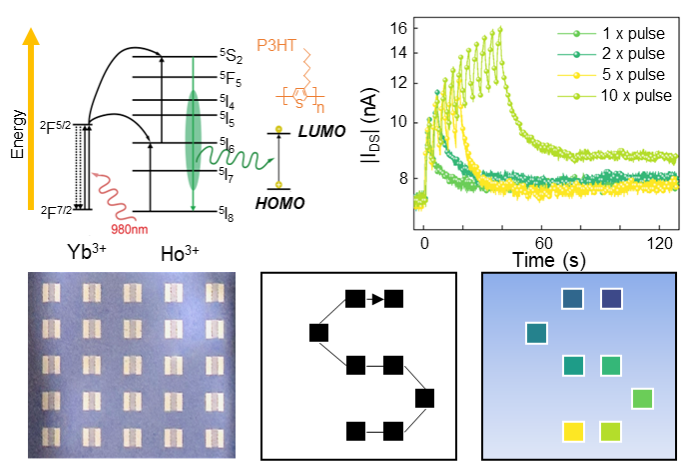On August 21, 2024, Zhou's team published a paper entitled "Near-Infrared Response Organic Synaptic Transistor for Dynamic Trace Extraction " in the Journal of Physical Chemistry Letters. This research paper explores the synaptic performance and near-infrared light trace recognition of organic synaptic transistors using near-infrared light response. Luan Wanhong, a 2023 graduate student from Institute for Advanced Study of Shenzhen University, is the first author. Ye Zhou from Institute for Advanced Study, Guanglong Ding from the School of Electronic Information and Engineering, and Chi-Ching Kuo from National Taipei University of Technology are the corresponding authors.
The development of neuromorphic hardware capable of detecting and recognizing moving targets through in-sensor computing strategy is considered as the important component for the construction of edge computing systems with distributed computation. In addition to responsiveness to visible light, the implementation of neuromorphic hardware should also demonstrate the ability to sense and process non-visible light, which is essential for tracking target object trajectories in specialized environments. Here, we fabricated an organic synaptic transistor with a near-infrared (NIR) response by incorporating doped LaF3: Yb/Ho upconversion quantum dots (UCQDs) into the channel of a Poly3-hexylthiophene (P3HT) based organic ffeld effect transistor (FET), serving as charge trapping and infrared sensing sites. The obtained synaptic transistor not only replicates common synaptic behaviors when exposed to NIR illumination, but also demonstrates potential applications for animals’ dynamic trajectory recognition in dark conditions. Compared to other monitoring technologies, P3HT transistors doped with LaF3: Yb/Ho UCQDs exhibit distinct advantages including NIR response, highefffciency computing, and sensitivity, which provides an experimental foundation and a design reference for the development of next-generation intelligent dynamic image recognition systems.The research was supported by the National Natural Science Foundation of China, the Basic and Applied Basic Research Foundation of Guangdong Province,the Science and Technology Innovation Commission of Shenzhen, RSC Researcher Collaborations grant, the State Key Laboratory of Radio Frequency Heterogeneous Integration (Independent Scientific Research Program), and the NTUT-SZU Joint Research Program.
Original link:https://pubs.acs.org/doi/10.1021/acs.jpclett.4c02238



